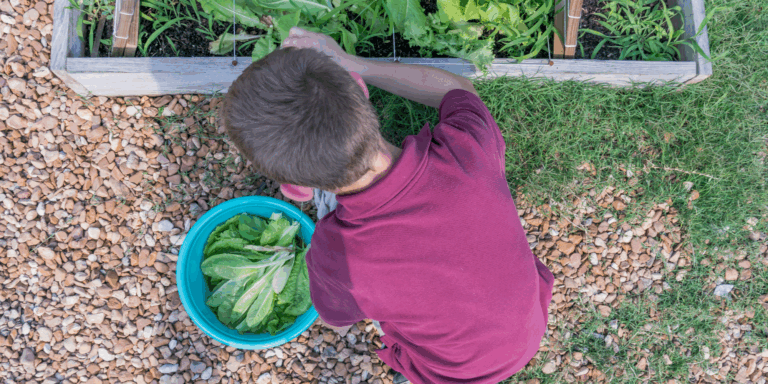What Are School Cafeterias Really Like? We Asked 400+ Kids and Grown-Ups.
Our Reimagining School Cafeterias report illustrates what’s happening in cafeterias nationwide—both the shared challenges and the exciting opportunities.
Help nourish students’ minds, bodies, and hearts this holiday season!
Our Reimagining School Cafeterias report illustrates what’s happening in cafeterias nationwide—both the shared challenges and the exciting opportunities.

“If you had a magic wand, what would you change about your school cafeteria?”
That’s one of the questions we asked students, teachers, school nutrition staff, and other people you’d find in the cafeteria on a school day.
For six months, FoodCorps’ program innovation team immersed ourselves in school cafeterias and communities across the country. These insights are the foundation of Reimagining School Cafeterias, a FoodCorps initiative in partnership with sweetgreen to give kids more choices in the cafeteria—from the way the space looks and feels to the food they eat.
Today, we’re proud to share the findings of our Reimagining School Cafeterias report—and what’s coming next.
The school lunchroom is a place where kids can take a break from their lessons, build relationships, and leave feeling wholly nourished. At FoodCorps, we believe cafeterias contain a world of potential—and deserve our attention.
That’s why, from December 2017 to May 2018, we set out to hear from school communities on how we might reimagine the cafeteria experience together. We used a human-centered design approach, which means we prioritized the input of those who would be most impacted by the project: students, cafeteria staff, teachers, and administrators.
How might we provide students with a greater diversity of tasty, culturally appropriate meal options without adding to the workload of school nutrition staff?
To achieve this goal, we spoke to more than 300 students and 100 adults in nine school communities across the country. Schools were selected based on a number of factors, from the size of the student population to the characteristics of the cafeteria. We gathered insights in one-on-one conversations, small group discussions, and by observing mealtimes.
We also sought additional research to supplement the conversations. To give our findings more context, we looked to existing academic research, behavioral science insights, restaurant professionals, and national experts in school nutrition.
After visiting lunchrooms from Arkansas to the District of Columbia to the Navajo Nation, we have come to understand that kids see cafeterias not just as places for eating, but for building community, connection, identity, agency, values, and culture.
FoodCorps synthesized what we heard into more than 40 opportunity areas for improving the cafeteria experience. The report reviews the 13 most frequently discussed topics in order of how often they were mentioned.
The most talked-about issues we heard from school community stakeholders:
The report shares findings from 10 other major opportunity areas, including food waste, home culture, the length of lunchtime, and more. These findings paint a picture of what’s happening in cafeterias nationwide—both the shared challenges and the exciting chance to reimagine school cafeterias as places of inclusivity.
Kids want to be heard, and their perspective is clear. Students need—and value—the break from academic learning that lunchtime provides. They also want a cafeteria experience that gives them agency and choice and that reflects where they come from. That’s why we’re turning their insights into action.
How might we cultivate a cafeteria environment where students can socialize and relax without it feeling out of control for them or adults?
This fall, in partnership with sweetgreen, FoodCorps will pilot three concepts in 15 schools across the country based on the feedback we heard during the research process. They include:
The learnings from this pilot year will inform the expansion of these initiatives into 50 schools in the 2020-2021 school year.
Changing school cafeterias for the better requires a collective effort. How can you get involved?
If you’re a student: Your voice matters! If you have thoughts on how to improve your cafeteria, share them with your student council, principal, cafeteria manager, or school nutrition director.
If you’re a parent: Have lunch with your child(ren) in the cafeteria to better understand their experience. Then, meet with school cafeteria staff to learn how you can support them.
If you work in a school: Find ways for school nutrition staff to collaborate with other school staff on a shared vision for the cafeteria! Celebrate National School Lunch Week and National School Breakfast Week as a school community, host welcome meals for teacher trainings, or involve cafeteria staff in school spirit days.
If you’re a FoodCorps supporter: Sign up for our mailing list to get the latest updates about Reimagining School Cafeterias. You can also learn more about the world of school nutrition at the FoodCorps blog.

Winterizing Your School Garden

5 Awesome Small Businesses by FoodCorps Alums

How to Advocate to Your School Board for Nourishing Food